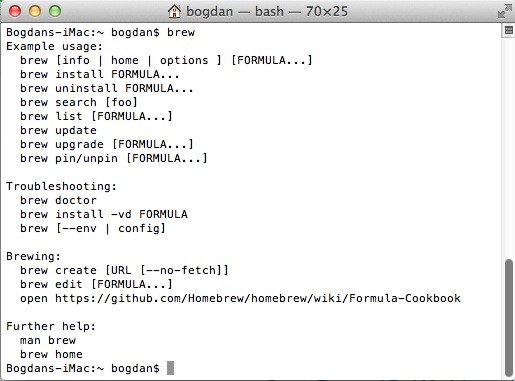

- #Brew cask install google drive pdf#
- #Brew cask install google drive free#
- #Brew cask install google drive mac#
Go to your “Applications” folder on Finder → right click Terminal in the “Utilities” folder → Duplicate → rename to “Rosetta Terminal” → Get Info → Open using > Rosetta Make a “Rosetta” version of your terminal: Install Rosetta /usr/sbin/softwareupdate -install-rosetta -agree-to-license Verify the installation, by running: node -vįinally, install yarn using npm npm install -g yarn Now run the following command to install node. We recommend installing node using nvm curl -o- | bashĪfter nvm is installed, you may have to close your terminal and open another one. Now, just restart the mysql service and you are good to go. Now, edit the MariaDB configuration file. Now, you can easily install the required packages by running the following command brew install python git redis install -cask wkhtmltopdf It makes it easy to install packages on macOS. NGINX (proxying multitenant sites in production)
#Brew cask install google drive pdf#
Wkhtmltopdf (version 0.12.5 with patched qt) (for pdf generation)Ĭron (bench's scheduled jobs: automated certificate renewal, scheduled backups) MariaDB 10.3.x / Postgres 9.5.x (to run database driven apps) Pre-requisites Python 3.7+ (version 13) / Python 3.8+ (develop branch)

However, we officially support only the following distributions. You also need to be on a *nix system, so any Linux Distribution and MacOS is supported. This guide assumes you are using a personal computer, VPS or a bare-metal server. Install in production mode, follow the latest recommended installation methods. But this should help get you through the bulk of the pain if you get a new laptop or reinstall your current one.These steps assume you want to install Bench in developer mode.
#Brew cask install google drive mac#
Unfortunately, Brew isn’t perfect apps from the mac store will still have to be done manually as there are no command line tools for this at the moment. The script in its current form is quite simple, as it’s just application installs, but there’s no reason it can’t be updated to set up your entire dev profile. If you need to install another application, then add it to the script and rerun the script (don’t forget to commit the result back to Git!). Run the script and it will install the apps if they don’t exist, else it will skip. # this will install rmtree feature for brew to uninstall packages with dependeciesīrew tap beeftornado/rmtree & brew install beeftornado/rmtree/brew-rmtree # curl -fsSL | tar -xf- & bash gist4bc1c726df934dccb307*/setup.sh & rm -r gist4bc1c726df934dccb307*īrew install caskroom/cask/brew-cask # makes available to install apps as packagesīrew tap caskroom/versions # for beta version available through cask But, to give you an idea of what it looks like: #!/bin/sh You can view my script here which has been iterated on from other users. It’s got a huge repository of thousands of apps which can all be installed from the command line. Brew describes itself as “the missing package manager” on mac. Fortunately, most of this can be automated with Brew. Having all your documents is one thing, but you need all your applications installed. You can choose to store your music this way too, but I’ve opted to use iTunes match for mine purely because it integrates well with my iDevices.
#Brew cask install google drive free#
Obviously feel free to replace Dropbox with whichever your backup provider of choice is. I use a slightly modified version of the folder structure recommended in this article, and haven’t gone back since I started. I know if my machine dies everything will sync and I’ll be back up and running quickly. I now store no personal data outside of Dropbox all code, all articles, all photos live in Dropbox. This isn’t rocketscience, but it does involve changing the way you work.

There must be a way to automate the startup process to get back to a productive state quickly? Data: Everything to Dropbox I’m currently on a year of travelling around the world, massively increasing the chances of my laptop getting stolen or dying a death. Often it’s just a good idea to start fresh every now and then just to clear the cobwebs out. This got me thinking could this apply to my laptop? Although I’ve been fairly lucky so far (touch wood), personal machines can die for all manner of reasons. Netflix have popularized the idea of the Chaos Monkey if someone let a monkey with an axe loose in your sever room, how quickly could you get things back and running? The answer is hopefully “straight away, just run a script to recreate the boxes”. Boxes should be standard, and easy to bring up again. With the advent of DevOps there has been a gradual realization that snowflake machines are a bad thing.


 0 kommentar(er)
0 kommentar(er)
